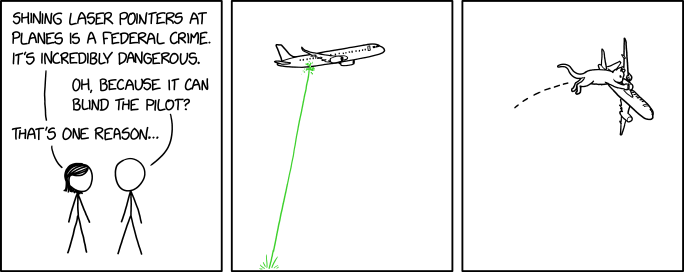Posted by Victor Mair
https://languagelog.ldc.upenn.edu/nll/?p=69680&utm_source=rss&utm_medium=rss&utm_campaign=linguistics-vs-archeology-and-physical-anthropology
https://languagelog.ldc.upenn.edu/nll/?p=69680
Subtitle: "A cautionary note on the application of limited linguistics studies to whole populations"
A prefatory note on "anthropology". In the early 90s, I was deeply involved in the first ancient DNA studies on the Tarim mummies* with Paolo Francalacci, an anthropologist at the University of Sassari. Sardinia. Paolo was deputed to work with me by the eminent population geneticist, Luigi Luca Cavalli-Sforza of the Stanford medical school genetics department, who was unable to endure the rigors of the expedition to Eastern Central Asia.
[*Wikipedia article now strangely distorted for political reasons. Be skeptical of its claims, especially those based on recent DNA studies.]
After we had collected the tissue samples in the field, Paolo took them back to Sassari to extract and analyze the attenuated DNA. This involved amplification through PCR (polymerase chain reaction), a process that later gained great fame during the years of the coronavirus pandemic, inasmuch as it is an essential step in the detection and quantification of messenger RNA (mRNA). Indeed, two Penn scientists, Drew Weissman and Katalin Karikó, were awarded the 2023 Nobel Prize in Physiology or Medicine for their work on mRNA technology, which was crucial in the development of COVID-19 injections.
Paolo's analysis extended over several years. About halfway through, I flew to Sardinia and visited Paolo in his "anthropology" lab. That was a revelation, because his whole department seemed more like it belonged to the hard sciences than to the social sciences, as I had become accustomed to for anthropology departments in the United States. Indeed, Paolo's own specialty, evolutionary biology, was full of zoological and botanical specimens, chemical reagents and apparatus, but showed little evidence of the cultural and social investigations I was familiar with in American departments of anthropology.
I told Paolo how surprised I was by the difference between the anthropology I knew of in America and what I was seeing in Sardinia. He smiled at me benignly and said, "We do physical anthropology," with a tone of voice and attitude that led me to believe that he considered physical anthropology to be real anthropology.
Enough by way of methodological preface.
Last week I posted "A cautionary note on the application of limited genetics studies to whole populations" (6/21/25) in which I decried overemphasis on genetics at the expense of archeology, linguistics, and many other disciplines that could be applied to the study of ancient populations. In this post, I will come at the juxtaposition between genetics and linguistics from the opposite angle, with history, archeology, art history, climate studies, and other relevant disciplines looking on as interested bystanders.
Once again, a claim has been made that the Xiōngnú and the Huns spoke a Paleo-Siberian Language:
Svenja Bonmann and Simon Fries, "Linguistic Evidence Suggests That Xiōng-nú and Huns Spoke the Same Paleo-Siberian Language", Transactions of the Philological Society (June 16, 2025).
Abstract
The Xiōng-nú were a tribal confederation who dominated Inner Asia from the third century BC to the second century AD. Xiōng-nú descendants later constituted the ethnic core of the European Huns. It has been argued that the Xiōng-nú spoke an Iranian, Turkic, Mongolic or Yeniseian language, but the linguistic affiliation of the Xiōng-nú and the Huns is still debated. Here, we show that linguistic evidence from four independent domains does indeed suggest that the Xiōng-nú and the Huns spoke the same Paleo-Siberian language and that this was an early form of Arin, a member of the Yeniseian language family. This identification augments and confirms genetic and archaeological studies and inspires new interdisciplinary research on Eurasian population history.
Here are the sections of the Bonmann and Fries paper:
1 Introduction
2 Earlier hypotheses on the linguistic origins of the Xiōng-nú and the Huns
3 Loanwords in Turkic and Mongolic (and how to detect them)
4 The Jié couplet and Xiōng-nú glosses
5 Hunnish anthroponymy
6 Toponymic and hydronymic evidence
In general, the appearance of the new Bonmann and Fries paper has been met with enthusiasm. Wolfgang Behr, who posted notices about the paper on X and Bluesky, has this to say about it:
There is an exciting new paper on the language of the Xiongnu out in TPS (attached), arguing,
with fresh evidence, that it was indeed Yeniseian, as first surmised by Lájos Ligeti (1902-1987) in 1950, more specifically a variety related to the Proto-Arin branch.
In passing, it also contains good arguments against the dubious ārya-,'Aryan' *[ɢ,g]ˤraʔ > xià 夏 equation proposed by Beckwith via hypothetical,"East Scythian" (for internal etymologies of the name, cf. Behr, Asiatische Studien, LXI.3, 2008, 727–754), and plausible ideas about a Yeniseian background of the notorious Eurasian Wanderwort for 'silver' (on which cf. Anton Antonov & Guillaume Jacques, "Turkic kümüš ’silver’ and the lambdaism vs sigmatism debate", Turkic languages, 2011, 15 (2), pp. 151-170. halshs-00655014).
For, among others, the reasons alluded to above, I have reservations about the findings of this paper. The tentativeness of the enterprise is evident in the hypothetical language in which it is couched: "probable / probably", "seem(s)", "(un)likely" "suggest(s) / suggestive", and so forth.
I would concede that, just as Southeast and South Sinitic languages may embody substratal Austronesian and Austroasiatic elements, Paleo-Siberian / Yeniseian / Arin may constitute a substratal component of the languages of the Xiōngnú / Huns, nevertheless we should be wary of jumping to the conclusion that Southeast and South Sinitic languages were ipso facto Austronesian and Austroasiatic and that Xiōngnú / Hunnic were Paleo-Siberian / Yeniseian / Arin languages.
When all is said and done, the base line of our researches on ancient civilizations should be their physical remains: textiles, metals, pottery, basketry, structures, associated animals and plants, middens, pits, bones, coprolites, usw.
Specifically, with regard to the identity of the Xiōngnú / Huns, we cannot ignore the Iranian inputs in the confederation, as the late Elling Eide, who worked on this problem for decades, had assembled mountains of supporting evidence. I believe that his records may still exist at his magnificent research library in Sarasota, Florida.
Finally, as Étienne de la Vaissière has demonstrated in his authoritative article on "Xiongnu" in Encyclopædia Iranica, the Xiōngnú were basically mounted warriors and nomads with steppe affinities to the west.
XIONGNU (Hsiung-nu), the great nomadic empire to the north of China in the 2nd and 1st centuries BCE, which extended to Iranian-speaking Central Asia and perhaps gave rise to the Huns of the Central Asian Iranian sources.
Origins. The Xiongnu are known mainly from archaeological data and from chapter 110 of the Shiji (Historical Records) of Sima Qian, written around 100 BCE, which is devoted to them. Comparison of the textual and archaeological data makes it possible to show that the Xiongnu were part of a wider phenomenon—the appearance in the 4th century BCE of elite mounted soldiers, the Hu (Di Cosmo, 2002), on the frontiers of the Chinese states which were expanding to the north. The first mention of the Xiongnu in Chinese sources dates to 318 BCE. Archaeologically, these Hu cavalrymen seem to be the heirs of a long development (the Early Nomadic period, from the end of the 7th to the middle of the 4th century BCE), during which the passage from an agro-pastoral economy to one dominated at times exclusively by equestrian pastoralism had taken place. Among these peoples, in the 4th and 3rd centuries BCE the Xiongnu occupied the steppe region of the northern Ordos as well as the regions to the northwest of the great bend of the Yellow River. Numerous archaeological finds in Inner Mongolia and in Ningxia demonstrate the existence of a nomadic culture that was socially differentiated and very rich, in which both iron and gold were in common use and which was in constant contact, militarily as well as diplomatically and commercially, with the Chinese states (in particular Zhao to the southeast).
The Xiōngnú were not hunter-gatherers and fishermen of the Yenisei Valley. I am amazed and dismayed that the linguists who propose that the origins of Xiōngnú language are to be found in Ket, Yeniseian, or other Paleo-Siberian language are oblivious to this basic reality of existence and ecology.
Selected readings
https://languagelog.ldc.upenn.edu/nll/?p=69680&utm_source=rss&utm_medium=rss&utm_campaign=linguistics-vs-archeology-and-physical-anthropology
https://languagelog.ldc.upenn.edu/nll/?p=69680


















